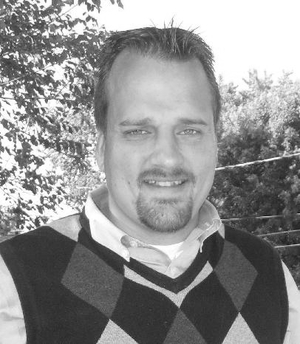In February 2012, the classroom project of University of Pennsylvania's Justin McDaniel gained North America-wide news coverage. McDaniel, an associate professor of religious studies, organized a class, as one commentator put it, to "experience firsthand" what it is like to be a monk. Of the 100 who applied for the course, only 17 were chosen. As news reports have it, students participating in the class were required to observe disciplines from various monastic traditions, gradually intensified throughout the semester. "At various periods during the semester, students must forego technology, coffee, physical human contact and certain foods. They'll also have to wake up at 5 a.m.—without an alarm clock," according to the Associated Press. "That's just a sample of the restrictions McDaniel imposes in an effort to help students become more observant, aware and disciplined. Each constraint represents an actual taboo observed by a monastic religious order." Though this course is noteworthy for its comprehensive scope, it is not uncommon for public universities to offer courses on monasticism or on parts of it such as contemplation. This example comes out of a major American university. No doubt other universities might have problems getting such a course by an ethics board. However, it serves as a good example for reflection about how the religious life might be studied in a generation that seems uninterested in joining a monastery. Importantly, these courses require no theological prerequisites; rather, they entice students by claiming superior or avantgarde pedagogical or methodological tools.
More, a critic would suggest, it seems particularly interesting for millennials, who would rather have an experience than read about it.
For the sake of discussion, I wish to add a second example: the 2005 reality television experiment The Monastery, at Worth Abbey in West Sussex, United Kingdom, which hosted five "ordinary" Englishmen for a 40-day monastic retreat. The link with the example above is, as the Abbey's former abbot, Christopher Jamison, explained, that the visitors were taken "just as they were." That is, as with the course, there were no prerequisites necessary to join. No doubt the men wanted to be on the show, but they were not prepared for what they were to experience, as became clear. The show became a hit (I recommend it), but it had unintended consequences for the Abbey and the Abbott.
Studying the true, the good and the beautiful from written texts and from observation, are staples of scholarship in the humanities and the social sciences. However, it seems the course and the show contend, especially for those living in monastic communities, that true understanding only comes as a participant. If this is true, how ought it be studied—especially when focused on religious virtuosity? Does one need to don the habit to study the habits of monasticism?
Let's look at two cases of monastic education or, at least, initiation into monastic practice. Though one might contend that the Buddhist traditions of contemplation or monasticism have never needed that kind of theological commitment more akin to Christianity, I am not sure it is entirely unlike the Christian contemplative, monastic traditions.
In the Christian monastic traditions, contemplation is not simply an end in itself but leads to the heart of the thing. In her book on the Cistercian tradition, Esther de Waal notes, "This is the crux of it all: to pray the Psalter with Christ." The emphasis here is not on praying the Psalter but on doing it with Christ. Aquinata Böckmann, another well-known Christian monastic writer, agrees with de Waal's assessment of that tradition. She argues that the whole of the Benedictine tradition (including Cistercians and Trappists) should be read through a key passage in Benedict's Rule (72.11-12). The monk ought to "prefer nothing whatever to Christ, and may he lead us all together to life everlasting." Again, the point of contemplation or the monastic life is not simply the discipline or some generic mystical experience, but specifically life with Christ.
Böckmann also makes a related point worth underlining: The monastery is not simply a place to become "a better you" but a place of intense spiritual warfare. That is, in the monastery there is the presumption of a metaphysical reality, not all positive. As in other kinds of warfare, the soldier cannot fight alone but needs to fight under the command of a leader. She writes: "The monk does not go there to live in fraternal community, but in order to learn, under the abbot as teacher, the art of spiritual warfare, of fighting self-will and the devil."
Thomas O'Loughlin, professor at the University of Nottingham, makes this point very clear: The basic monastic relationship is master and pupil. It is not by chance that Benedict begins his Rule with: "Listen, O my son, to the precepts of thy master." The master-pupil relationship gives the written Rule its authority.
Insofar as the essence of monastic life and the wisdom of the elders can be expressed in writing, it can be asserted that the Rule becomes a master, and every monk is its disciple, and thus the imagery of many rules (e.g., "The Rule of the Master"). However, the book never supplants the person: Learning always involves a communication of the life from one person—the master—to another.
Yet, O'Loughlin writes, it is never enough to simply say master and pupil. For, as argued above, that relationship must be understood as belonging to the larger person of Christ.
These brief comments stand for a larger body of literature on the Western Christian monastic and contemplative traditions. As we see the pattern emerge, we can begin to formulate our problem: Can one study contemplative monasticism without first accepting the status of a "son"? Since this kind of relationship seems out of place in the context of the two examples we gave (i.e., there were teachers but not masters), how ought we to evaluate the insider methods of pedagogy of, or introductions to, their respective traditions?
I ask these questions in the context of my research project on the state of religious or monastic life in contemporary Canada, but also from a practical, pedagogical point of view. I don't engage in this simply as a thought experiment without impact.
An example: I have encouraged students to reflect on the practical impact of ideas studied in texts and discussed in courses on Christian spirituality, courses that had significant focus on contemplative and monastic writers. Although some criticize academic Christian spirituality for its distance from systematic or exegetical concerns, it is often overlooked, paradoxically, that the most important distance is that from Christianity in practice—what it really looks, smells, tastes, sounds and feels like. Surely spirituality courses have often paid little attention to systematic concerns in various theological traditions. More, they can have little use for the way spirituality is actually embodied in those traditions.
In my course, I assigned "field reports" that attempted to overcome this divide by facilitating the observation of a significant part of Christian spirituality—regular, communal worship. When visiting places of worship, students observe their various practices in one place, in one "embodiment." Though some ended up being participant-observers (sometimes being singled out as a visitor), the great majority could simply observe what happened around them in the worship space.
I liked the strategy for a few reasons: First, it allowed students to observe Christian spirituality in practice—to see Christian spirituality as it is lived. Second, it gave students tools with which they could analyze their own religious or spiritual practice or non-practice. Finally, it allowed students to analyze a tradition of Christian spirituality without the abstraction that sometimes happens in class or the unhelpful confrontations that are sometimes spawned by these abstractions. Yet I ask the question in this context: Was it enough? Was my approach too timid or uninformative?
I could look to educational theorists or philosophers of religion, but I note instead the thought of Harold Roth, professor in the Contemplative Studies initiative at Brown University. His thought focuses on one key aspect of monastic life, that of contemplation. He would contend that my methods were not necessarily as thorough as possible. In a recent speech at McGill University, Roth argued that the university should be home to a more robust program of contemplative studies. Like the programs listed above, his program is open to all students and purports to be based on current scientific research. For many years, Roth has given courses on contemplation, usually consisting of a weekly reading seminar, plus a meditation lab. The meditation features introductory yogic practice, specific contemplative technique, question period and journaling. Based on his own research and that of scholars such as B. Alan Wallace (The Tabooof Subjectivity), Roth argues that third-person (objective observer) and even second-person (engagement with intersubjective communication) study are not sufficient for the study of contemplation, which he defines as the focusing of attention in a sustained fashion, leading to deepened states of concentration, broadening of awareness and self-contextualizing experiences. Rather, Roth pushed for first-person study, that which is based on subjective experience. For the sake of study, this experience can be divided into immediate experience or non-self-referential experi-ence and the objectification of that experience into specific perceptions, feelings and ideas.
Does this answer my questions? Does the fact that we might be open to first person study of contemplation open the door to the kinds of courses or experiences on monasticism noted at the outset.
I come back to an idea in an essay on theories of "presence" by Cormac Power. In Presence in Play, Power makes the following argument: "In the contemporary Western world, our knowledge of the environment is increasingly shaped not by personal experience or interaction, but by media images and representations." In this work, Power speaks about how that which surrounds us in reality, the setting in which we physically live, is made "present" in live theatre productions. However, his comment helpfully highlights the way institutions and communities around us are portrayed in all forms of media. So much of what we know about our society has, indeed, been filtered or even presented by stylized representations. This point is particularly true for the depiction of Catholic religious (perhaps the depiction of much of religion). Catholic religious are not simply as they are represented in popular media, nor even how they might be understood by those within their own religious traditions.
Monasticism is not like building a Lego set. It might not be possible to "pick and choose" the blocks that you think are the most representative of the tradition and put them together in an academic course. The course noted at the beginning did try to be comprehensive, as did the experiment at Worth Abbey, but there is clearly still the likelihood in both cases that monasticism became more about individual growth than community, especially a theological community.
This also relates to projects of study that are narrower in focus. I gave the example of Contemplative Studies. If my project was to discover monasticism by engaging in structured sessions of contemplation, I am not sure that would fairly introduce students to monastic life. First, monks have no monopoly on contemplation. Second, their life, and I know the Western Christian tradition the best, is about much more than contemplation in a broad sense. Indeed, the live-like-a-monk course seems most problematic in that it picks-and-chooses various disciplines from these traditions. I don't want to speak with categorical language here—the professor is not here to defend himself—but I am not sure this hybrid, first-person experiential method ought to be a privileged mode of studying monasticism for those not wishing to commit themselves to it.
For the last several years, I have also been studying the religious life in a concentrated manner. I have interviewed hundreds of monks and visited dozens of religious houses. Though I have not had the experience of "reality" monasticism, and I would not even consider myself a participant-observer (I wanted to stay an observer), I have had an "inside" look at monasteries—no doubt as much as or more than any other researcher in the field. This being said, I was not always fulfilled as a researcher. I wanted more access to that life.
For professional and personal reasons, joining McDaniel's course or volunteering to join the Canadian version of The Monastery were not possible. Further, for the reasons above, I am not convinced that these are even the best options for the study of these traditions.
And something surprised me: though I am careful to balance experience with study, it so happens that the single most informative source of understanding in my time was a modest historical/autobiographical book by an American Benedictine monk, Terrence Kardong. I do not suggest that it is the best book on monasticism ever written, but it was the right book for me at a specific juncture in my study. After all the interviews, visits and discussions, it was a printed book that "opened" the monastery to me in a way that tied together a number of loose ends.
Kardong's book, Conversations with Saint Benedict: The Rule in Today's World, links his tremendous knowledge of the Rule with his more than 50 years experience living it. I found it stimulating for it critically engages his own tradition, all the while steering clear of sensationalism.
The link that I make is that he is a "real" insider, allowing himself to be objectified for study. It is a text, but one that provided me, at the time, what seemed to be insider knowledge. As such, it was integral monastic experience in one subject, but open to being plugged into a wider project of study.






